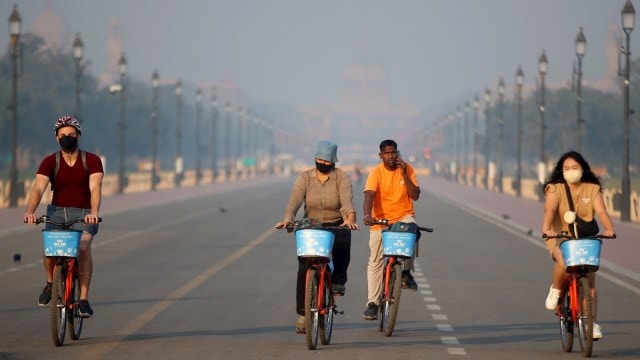
“There is always a well-known solution to every human problem — neat, plausible, and wrong.” So wrote H L Mencken in Prejudices, Second Series, over a century ago. In the case of Delhi’s air pollution, the “well-known solution” is to crack down on crop-residue burning in Punjab and Haryana, along with some expenditure to help farmers find alternative disposal methods or uses for the residue. The problem is that while this source contributes about half of Delhi’s pollution, this is true for only three weeks or so at this time of year. On an annual basis, it contributes about 3 per cent of annual PM 2.5 (fine particulate matter) according to a review of scientific studies by Sarath Guttikunda and co-authors last year. So, while the effort to reduce stubble burning is justified, it is only a small part of the overall problem. The truth is that for the rest of the winter when air pollution is particularly acute, and for the rest of the year, there are other, much larger sources. These include residential burning of firewood and dung for cooking and heating, industries, including coal-fired power plants, construction dust and dust from roads that are dug up and not cordoned off from traffic, vehicle exhaust fumes, and waste burning. Many of these sources are outside Delhi. Pollution from power plants is statistically detectable for a thousand kilometres downwind, as my own research shows.
A second important point is that Delhi’s air pollution is not a recent phenomenon. It has built up over several decades. It is unrealistic to expect to solve it within a year or two. Nevertheless, other countries’ experiences show that air pollution can be reduced to very low levels with proper institutions and action. London, in the late 19th century, was one of the most polluted cities in the world, due to a high population that was burning coal and firewood to keep warm. Sherlock Holmes and Dr Watson famously went after criminals in swirling fogs that were actually smog. As late as December 1952, 4,000 people died of air pollution in London when a temperature inversion held the pollution in the city. But within a few years, this disappeared as coal heating was replaced by gas and other measures were taken to clean the air. Today, London is among the cleanest big cities in the world.
In 2021, prodded by the Supreme Court, the Government of India issued an ordinance creating a Commission for Air Quality Management (CAQM) in the National Capital Region and Adjoining Areas. This was soon made into a law. Unfortunately, those who framed the ordinance didn’t ask why the Central and State Pollution Control Boards, who already have the mandate to tackle air pollution, had failed to control it, and what weaknesses in the legal and institutional framework had led to this situation. Had they done so, they would not have created a new institution that also lacks a significant budget and a large scientific staff. The laws do not require either the old or the new institutions to commission and publish scientific studies or do cost-benefit analyses justifying any regulation they produce.
It is hardly surprising if central and state governments fail to implement the regulations or orders of the new commission when these will be deeply resented by those on whom they are imposed, with political blowback for the governments. Without scientific justification and transparency, any regulation is bound to be arbitrary since regulators lack data to make informed decisions. And such justification is impossible without a large budget and in-house scientific capability to monitor and publish data on thousands of sources, and conduct suitable studies.
So, what do we need to solve the problem? An amended law that will not create yet another toothless and bankrupt institution, but rather empower our existing pollution control boards and the CAQM and give them the money and autonomy to actually diagnose the problem. Autonomy must go with accountability, of course. The regulators must be obliged to collect data and do cost-benefit analyses, all in the public domain, followed by public comment all to be published, before they can change or issue a new regulation.
The most important criterion, that of political and public acceptability, suggests a requirement in the law that no new regulation can abruptly raise costs for any class of individuals or firms without compensation. While it is essential that polluters be forced to pay, any such costs should rise gradually, giving people and industries time to adjust and make new investments in cleaner technologies. Such a provision will go a long way in reassuring legislators that the newly empowered regulator will not make them unpopular.
Finally, it is important to allow regulators flexibility to tailor regulations to the problem at hand. They should be allowed to charge pollution fees in addition to issuing pollution standards (but not to keep the revenue – their budget should come from the government, otherwise they will have a clear incentive to make money, not end pollution). They should be allowed to establish pollution permit trading schemes. These can be valuable to prevent lobbying by industry to stop action. With a trading scheme, the more efficient and cleaner parts of an industry stand to make money from the regulation by selling permits by reducing pollution in excess of the requirement. This gives a section of industry a financial stake in pollution control.
The courts should stop telling the executive that they should implement harsh orders. Instead, they need to push to reform the institutional structure of pollution control to make it more effective and less threatening.
The writer is professor, Economics and Planning Unit, Indian Statistical Institute, Delhi
© The Indian Express Pvt Ltd
First uploaded on: 01-11-2024 at 18:30 IST



